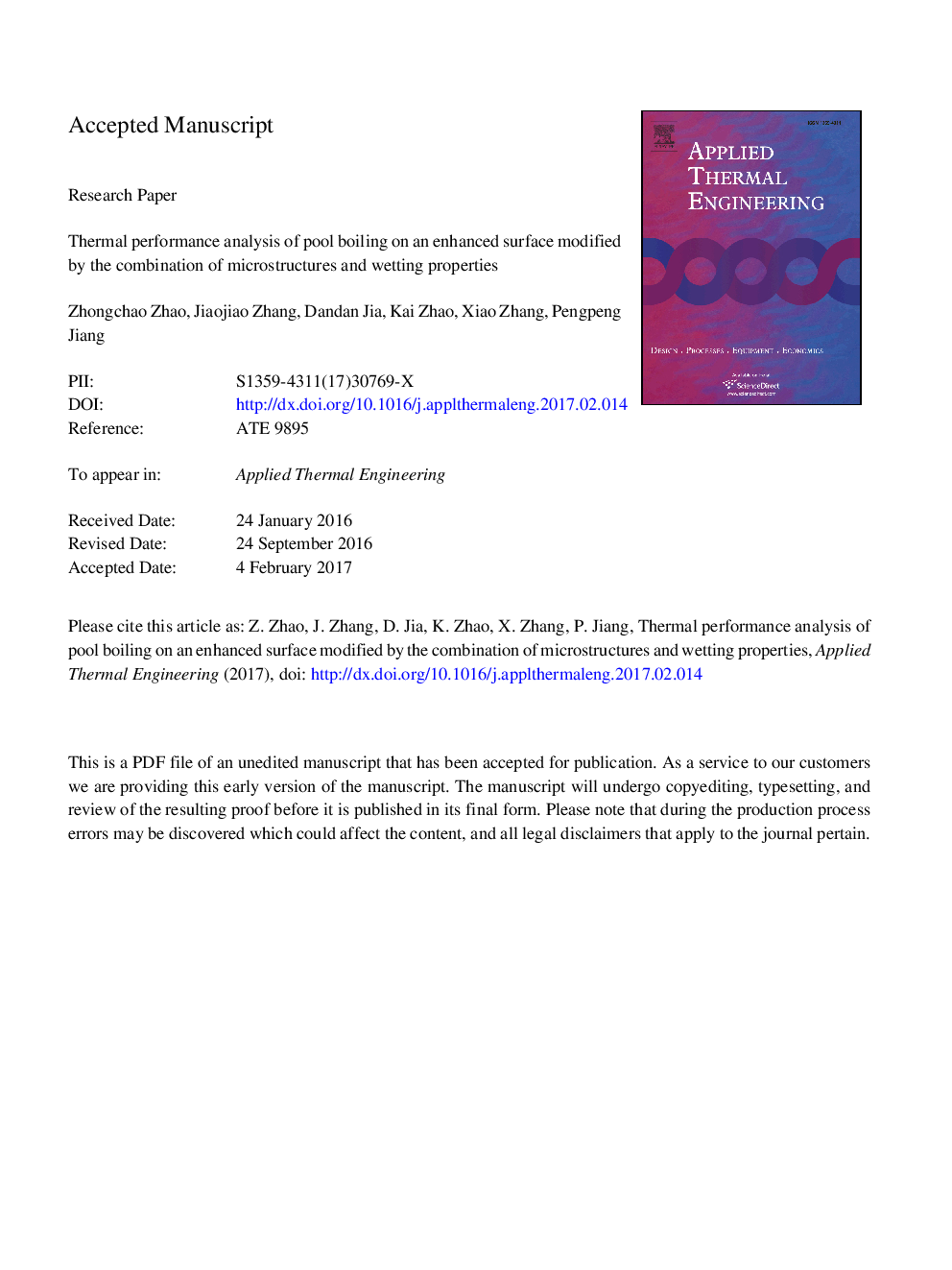| Article ID | Journal | Published Year | Pages | File Type |
|---|---|---|---|---|
| 4991532 | Applied Thermal Engineering | 2017 | 30 Pages |
Abstract
Characterized by low temperature difference and high heat flux, pool boiling heat transfer has been widely applied in various engineering technical fields. The aim of this study was to explore the thermal performance of pool boiling heat transfer on an enhanced surface modified by the combination of microstructures and wetting properties. The two-dimensional transient volume of fluid model and numerical simulation were selected to investigate each case which was established. Variation of the vapor bubble behavior, the velocity field of computational domain, the temperature at the liquid/solid interface and heat transfer coefficient (HTC) of each case were analyzed. The heat transfer performances of mixed hydrophilic and hydrophobic microstructures were all superior to those of hydrophilic microstructures only, except the flat. With respect to hydrophilic microstructures, the average growth rates of HTC for mixed hydrophilic and hydrophobic microstructures were 17.59%, 21.59%, 2.74% and 3.81% when the heights of microstructures were 3 μm, 5 7, 7 μm and 9 μm, respectively. Moreover, the average growth rate of HTC for mixed hydrophilic and hydrophobic microstructures decreased by 12.44%, 5.31% and 5.21% with increasing width.
Related Topics
Physical Sciences and Engineering
Chemical Engineering
Fluid Flow and Transfer Processes
Authors
Zhongchao Zhao, Jiaojiao Zhang, Dandan Jia, Kai Zhao, Xiao Zhang, Pengpeng Jiang,
